How can a living room become comfortable without losing the homey feel? This article will tell you about a practical approach to furnishing the main room of the house
Since ancient times, a good owner was considered to be one who knew howto receive guests, hence the special room set aside for this, often the main one in the house - this is how the living room appeared. A kind of business card, and in our time it is from the living room, as a rule, that the guest's acquaintance with the home begins.
In addition to receptions, the living room plays an important rolea common family space where the owners can relax together, gather to watch a movie or play a board game, have a festive dinner, or sit comfortably while reading a book. Often this is the largest and most comfortable room (after the kitchen, of course), it is the key link in the entire living area and sets the general atmosphere of the home space, but in addition to aesthetic beauty, it should be as comfortable, functional and practical as possible, based on the direct translation from English: living room - a room for life.
Below are some tips on how to combine beauty with convenience.
1. Lighten the tension
Furnishing a living room from scratch or stillhaving decided to give a “second wind” to the existing one, follow the rule of the golden mean - the room should be light and spacious, regardless of the actual size. When considering the placement of furniture, decorative elements and other interior items, avoid clutter - it is better to have less, but with taste, than everything at once. Of course, this does not mean that in the middle of the room there should be only an orphaned sofa, but an aesthetically and functionally thoughtful approach to interior design is the path to a balance of beauty and convenience.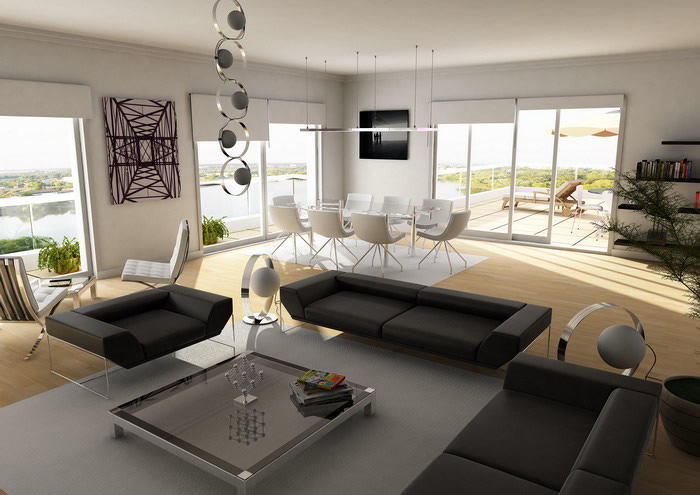


2. Store things using space wisely
It doesn't matter if you have a tiny living room or its dimensionsexceed the area of the average Moscow apartment - there is always the opportunity to use the extra space to store things, both necessary and not so necessary. Today, there are many so-called smart furniture models that, in addition to their direct purpose, have additional ones. For example, a coffee table with drawers for storing small items, sofas with built-in shelves for books, multifunctional and compact shelving. This way, you can save space by getting rid of bulky cabinets and Romanian walls, placing things compactly.


3. Create a center for the room
Based on the fact that the main thing isSince the purpose of the living room is to receive guests and spend time in a company of several people, it would be nice to organize a conditional center of the room. By placing chairs, sofa sections and any other seating around the intended point, which can be a tea table, a low flat cabinet or an electric fireplace against the wall, you will create a "fulcrum" for subsequent actions in the design.



4. Form living room zones
Starting from the central part of the living room withequipped seating areas, move on, dividing the area into zones. If the living room is large enough, it can be multifunctional. For example, by dividing part of the space with compact through bookcases or consoles for multimedia devices, you can easily combine a soft corner for watching movies and a dining room for festive dinners. In old Soviet-era houses, zoning is almost the only way to diversify the rectangular narrow area of the living room.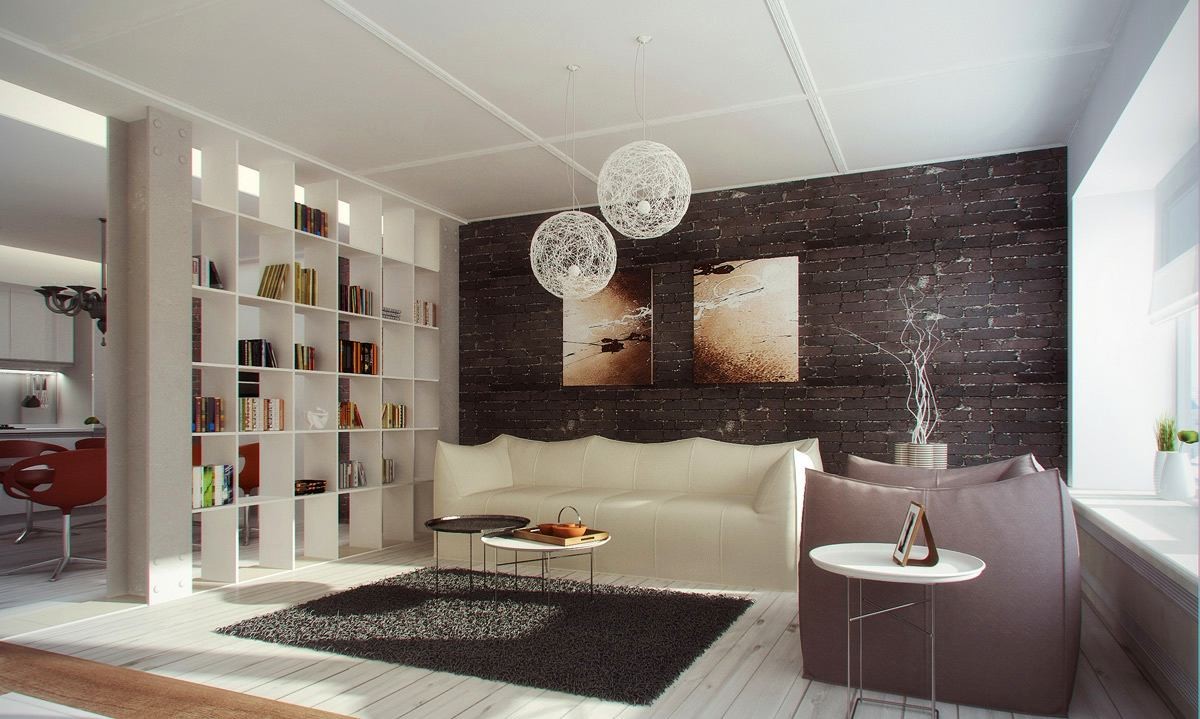



5. Diffuse the light
One of the decisive factors in the design of anylighting fixtures are the main feature of the premises, the living room is no exception. The era of one chandelier of general light in the center of the ceiling is long gone, harsh shadows and inappropriate glare can ruin the most thoughtful interior.
Lighting should be organized so thatto suit several living room usage scenarios – from direct reception of guests to cozy reading of a book on the floor. Place lighting fixtures according to each zone of the room, if there is a dining table, even in the corner, it is logical to hang a chandelier or ceiling lamp above it, while a floor lamp on a long leg will be appropriate in the soft corner area. Use different types of lighting fixtures, so you can create the necessary atmosphere in each zone of the living room.

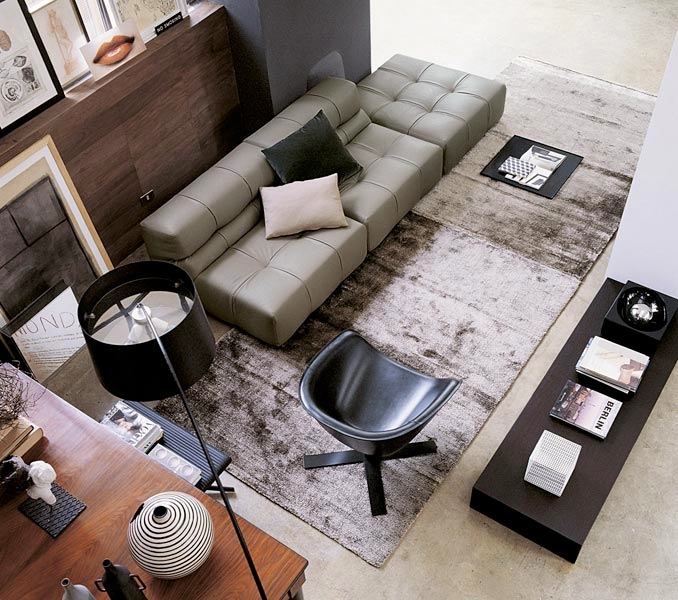

6. Look for an alternative to a soft corner
Everyone remembers these bulky, often dusty plushstructures that usually occupy one of the corners of the room — it's time to forget. Undoubtedly, the basis of any living room is the sofa group. Depending on the available room sizes, there are several options for choosing places to relax in a sitting or lying position. If the living room is large enough, use low wide sofas and sets.
They are ideal for a large holidaya company where everyone has enough space, paired with tea tables or floor stands, it will be convenient not only to chat while sipping tea, but also to involve everyone in an exciting board game. Do not be afraid to combine several styles and seating options - this is a good solution to emphasize the so-called communication zone. If your main room is not so big, and the desired sofa paired with armchairs already interferes with getting inside, no problem, buy a less bulky sofa and a couple of beanbag chairs - they will complement each other perfectly.



7. Open the windows
In addition to artificial light sourcesrooms, natural light plays an important role. If your living room cannot boast of French windows from floor to ceiling, and it has one small window, do not curtain it with thick material - open the room to the light. Fabric blinds of light shades are ideal, which when closed will not absorb much external light, but will not turn the room into an open area in the sun. If you are the owner of a beautiful panorama from the windows to the floor - decorate them with transparent tulle, complementing all the same horizontal or vertical fabric blinds.

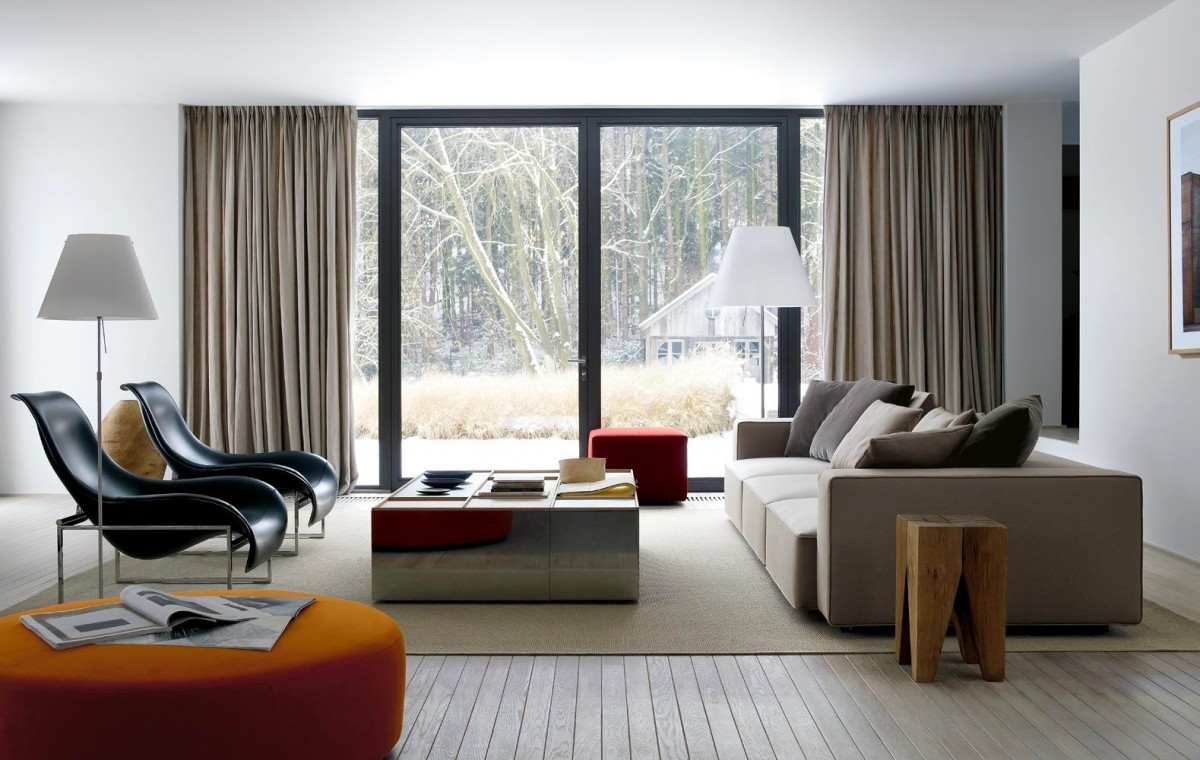
8. Disguise the TV
Unfortunately or fortunately, I bought the TVthe status of an integral and full member of the "home society" on a par with such traditional things as a bed or a chair. Many owners and decorators, when decorating a room's interior, simply do not attach much importance to the placement (not location) of the TV and other multimedia devices in the overall picture of the space, and in vain.
There are many todaystylized by designers devices, but what if you are the owner of, if not the cheapest, but still ordinary electronics, which, to put it mildly, is not particularly well located on the wall and does not emphasize the advantages of the room at all, and often serves as a banal dust collector? For this, there are a number of approaches that will help free up occupied surfaces, hide metal boxes, wires and plasma panels, preserving the appearance and without losing the functionality of the latter.
For example, use the services of the samesmart furniture, automatic retractable consoles, niches with sliding panels - they will neatly disguise the products of technological progress, saving you from additional cleaning. An alternative can also be a ceiling projector or a built-in acoustic system, but this is a separate topic.


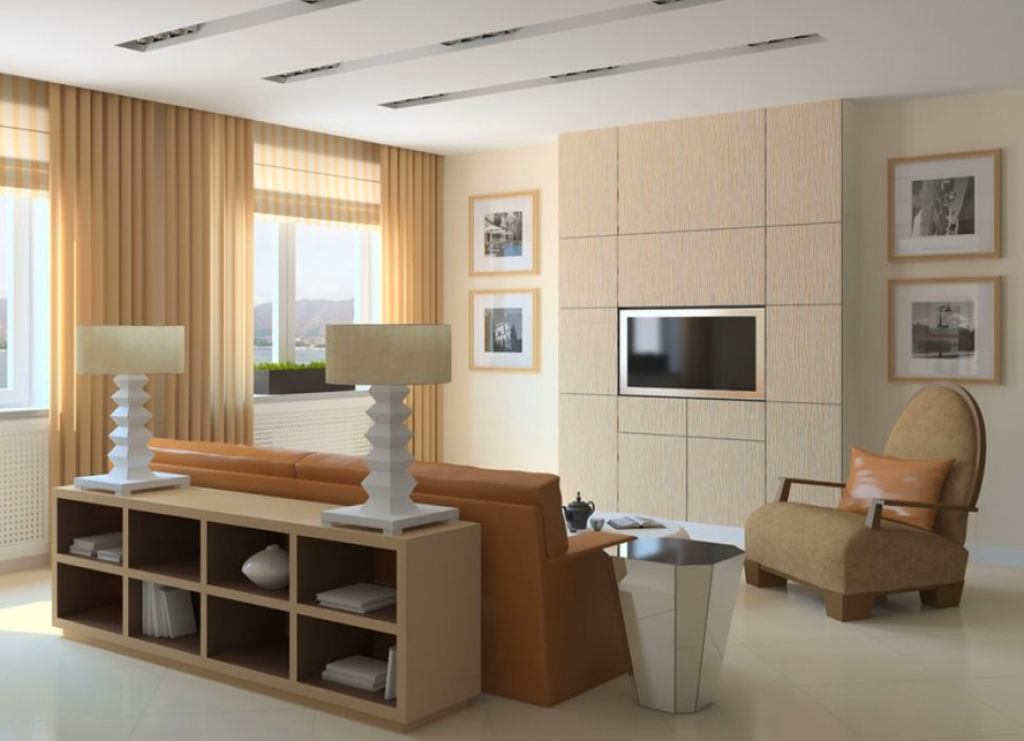
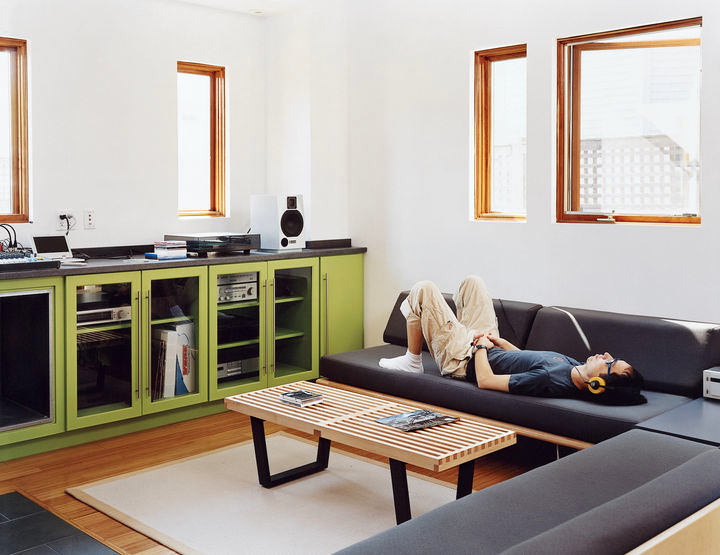
9. Free up your interior from accessories
Only in grandma's apartment is it permissible to store"zoo" of 60s animal figurines, 101 souvenir plates from Egypt on the wall and other unnecessary trifles. Do not overload the living room interior with many different accessories, even if each of them is unique, the minimum effect of such design is eclecticism, the maximum is bad taste.
Define for yourself several lines and styles indecor, let it be a single-color oil painting, but ideally matching the color of the carved oak table, or a mirror (required) in a unique and original frame. Do not get carried away with the number of decorative pillows, carpets and other fabric products - it is much easier to breathe in a room without dust.


10. Increase the area actually
If your living room is not very largedimensions, but adjacent to the kitchen or has an exit to the balcony or loggia, feel free to expand its boundaries. There is nothing wrong with your small room becoming much larger due to the kitchen and turning into a living room-studio. Everything works on the same principle of zoning: the kitchen turns into a dining room with a full-fledged dining table and work surface, smoothly flowing into a library, recreation area or office, which, by the way, can be organized on the territory of the former balcony or loggia.

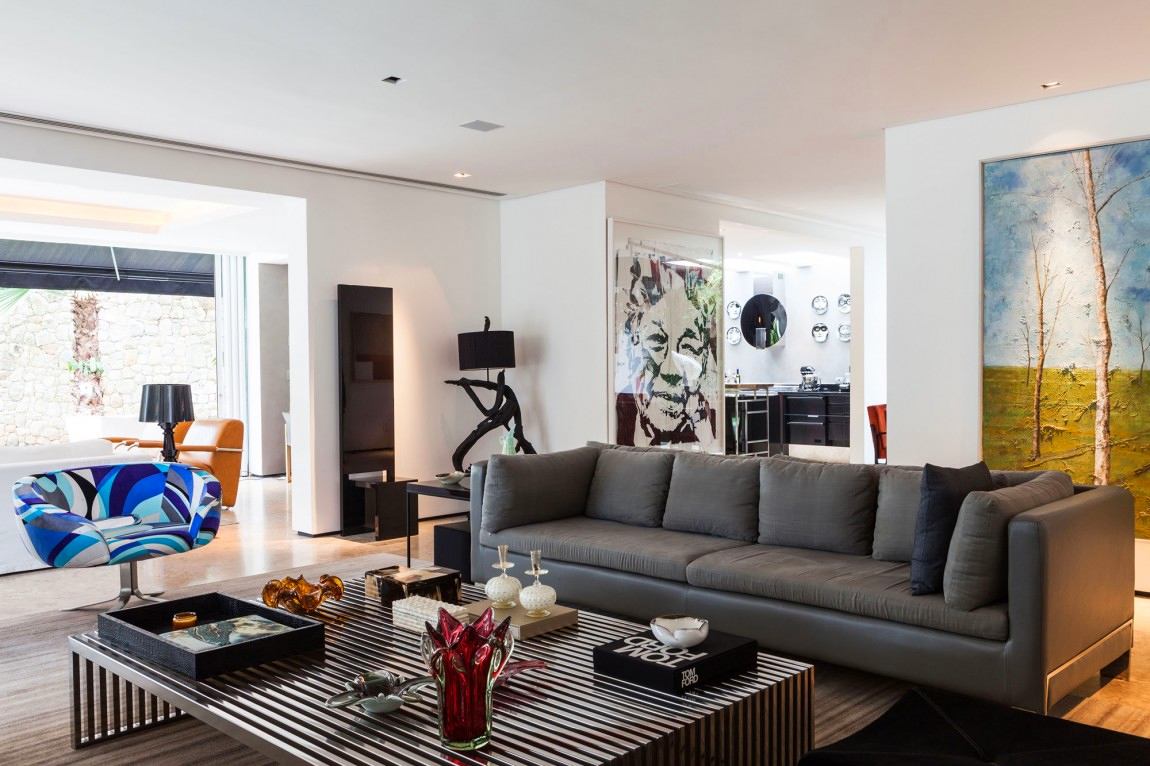

 pinterest.com
pinterest.com


